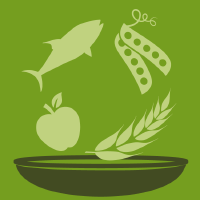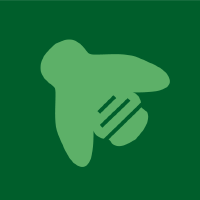Topic Editors


Edible Insects as Feed and Food: Opportunities and Challenges

Topic Information
Dear Colleagues,
The scientific understanding of insects as food and feed has grown tremendously over the last five years. The industrial sector is also becoming increasingly involved in the raising, processing, and selling of edible insects. Additionally, utilising residual substrates that contain chitin as fertiliser might improve plant health. There is a growing concern among consumers that eating insects is an alternative option. Insects must be processed into ingredients before being used in food products and goods. In addition, insects provide great feed conversion rates, represent good sources of food and feed, and minimally contribute to greenhouse gas emissions. Some insect species may be raised on organic side streams, lowering environmental pollution and producing high-protein feed out of waste that can take the place of increasingly expensive feed components. Further research is necessary to determine the nutritional and health advantages for both animals and human. The insect industry is developing quickly, but there are still numerous obstacles to overcome, which can only be achieved by close collaboration amongst all stakeholders.
Dr. Rifat Ullah Khan
Dr. Shabana Naz
Topic Editors
Keywords
- insect
- feed
- food
- protein
- alternative sources
Participating Journals
| Journal Name | Impact Factor | CiteScore | Launched Year | First Decision (median) | APC | |
|---|---|---|---|---|---|---|

Agriculture
|
3.6 | 3.6 | 2011 | 17.7 Days | CHF 2600 | Submit |

Animals
|
3.0 | 4.2 | 2011 | 18.1 Days | CHF 2400 | Submit |

Dietetics
|
- | - | 2022 | 24.3 Days | CHF 1000 | Submit |

Foods
|
5.2 | 5.8 | 2012 | 13.1 Days | CHF 2900 | Submit |

Insects
|
3.0 | 4.2 | 2010 | 17 Days | CHF 2600 | Submit |

MDPI Topics is cooperating with Preprints.org and has built a direct connection between MDPI journals and Preprints.org. Authors are encouraged to enjoy the benefits by posting a preprint at Preprints.org prior to publication:
- Immediately share your ideas ahead of publication and establish your research priority;
- Protect your idea from being stolen with this time-stamped preprint article;
- Enhance the exposure and impact of your research;
- Receive feedback from your peers in advance;
- Have it indexed in Web of Science (Preprint Citation Index), Google Scholar, Crossref, SHARE, PrePubMed, Scilit and Europe PMC.

